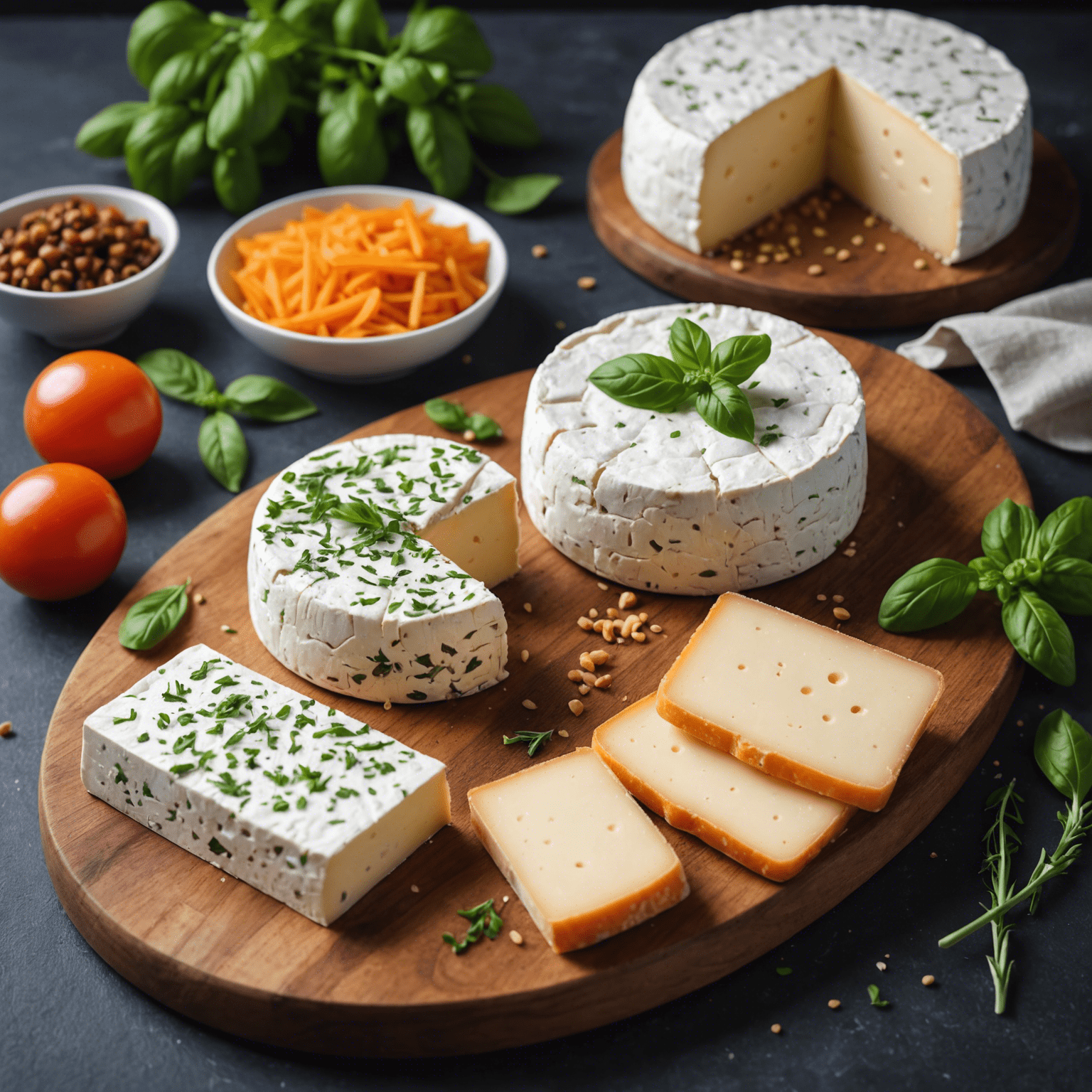Get ready to indulge in the cheesiest vegan discoveries without the dairy! From melt-in-your-mouth slices to perfectly grateable shreds, and creamy blocks that can be melted or served on a cheese platter, we bring you the top vegan cheese alternatives for every culinary need.
What is Vegan Cheese?
If you haven’t already ventured into the world of plant-based cheese, you might be wondering, “What is vegan cheese?”
Vegan cheese is a dairy-free alternative to traditional cheese, made from plant-based ingredients. It comes in various forms, like slices, shreds, and blocks, each designed to mimic the texture, taste, and melting properties of cheese.
Vegan cheese can be made from a wide range of plant-based ingredients, including soy, nuts (like cashews and almonds), seeds, coconut milk, and even peas. These foods are processed into cheese-like textures and flavors using techniques like fermentation, blending, and sometimes the addition of plant-derived fats and proteins.
The nutritional profile of vegan cheese can vary depending on its ingredients. Many vegan cheeses are fortified with vitamins D and B12, which are often added to dairy products but are not naturally present in plant-based foods. Additionally, some vegan cheeses may contain added sugar, so it’s important to read the label if you’re watching your sugar intake.
With the increasing demand for plant-based foods, the market for vegan cheese has been growing rapidly in recent years. Manufacturers are constantly innovating and improving the production techniques for vegan cheese, allowing it to more closely mimic the taste, texture, and melting properties of dairy-based cheese.
Vegan Cheese Slices
If you’re looking for a vegan cheese substitute that can melt and stretch like traditional cheese for perfect grilled cheese sandwiches or burgers, then vegan cheese slices are the way to go.
Some vegan cheese slices are specifically designed to melt and stretch when heated, while others are better suited for sandwiches where melting isn’t necessary. Check the packaging for melting and grilling capabilities to ensure you choose the right slices for your needs.
When it comes to cooking with vegan cheese slices, there are a few techniques to keep in mind:
- For grilled cheese sandwiches, use a pan with a non-stick surface or add a bit of oil to prevent sticking.
- Layer the slices between the bread to create a gooey, cheesy center.
- If you’re using a vegan cheese that doesn’t melt easily, consider placing a heavy skillet on top of the sandwich to help the slices melt faster.
Vegan cheese slices are also great for adding flavor and variety to burgers, sandwiches, and wraps. Try stacking different types of slices, such as cheddar, pepper jack, and swiss, for a more exciting culinary experience.
When it comes to pairing vegan cheese slices with other ingredients, the possibilities are endless. Consider adding slices to sandwiches with tomato, avocado, or pickles for added texture and flavor. For burgers, layer slices between two patties or on top of the bun for a melty, gooey bite.
Vegan Cheese Shreds
If you’re looking for a vegan cheese substitute that can replace shredded cheese in recipes, go for vegan cheese shreds.
These plant-based alternatives are designed to mimic the texture and consistency of shredded cheese. Some brands even add a coating to the shreds to help them melt and brown better when cooked. This makes vegan cheese shreds an excellent choice for topping pizzas, tacos, and casseroles, as well as for baking.
When incorporating vegan cheese shreds into your cooking, keep in mind that some brands may clump together when melted. To avoid this, try tossing the shreds in a bit of cornstarch or another starchy powder before cooking. This will help the shreds bind together and melt more evenly.
In addition to being used as a topping or ingredient in savory dishes, vegan cheese shreds can also be incorporated into baked goods, such as mac and cheese or gratin dishes. Simply replace dairy-based cheese with vegan cheese shreds when following your favorite recipes.
Vegan Cheese Blocks
If you’re looking for a vegan cheese substitute that can be used for cooking, baking, and serving on a cheese platter, go for vegan cheese blocks.
Vegan cheese blocks come in various flavors and textures, making them a versatile option for plant-based cooking. They can be sliced, cubed, or crumbled, depending on the recipe. Some vegan cheese blocks melt easily and can be used to bind sauces and dips together, while others have a firmer texture that’s better suited for slicing and serving.
When preparing vegan cheese blocks for cooking or baking, consider the melting and binding properties of the cheese. For sauces and dips, choose a vegan cheese with a soft texture and good melting capabilities. For casseroles and gratins, a firmer vegan cheese may be a better option, as it will hold its shape when baked.
If you’re serving vegan cheese blocks on a cheese platter, choose a variety of flavors and textures to create an appealing presentation. Consider pairing the cheese with accompaniments like nuts, fruits, crackers, and breads. Arrange the cheese and accompaniments on a large platter, making sure the cheese blocks are easily accessible and visually appealing.
When it comes to choosing the best vegan cheese for your needs, consider the following factors:
- Flavor profile: Do you prefer a sharp, tangy cheese or a mild, creamy one?
- Texture: Would you prefer a soft, spreadable cheese or a firm, slicing cheese?
- Melting and cooking properties: Will the cheese melt easily? Will it bind sauces and dips together?
When navigating the world of vegan cheese, it can be overwhelming with the sheer number of brands and products available. To find the best vegan cheese substitute for your needs, read reviews, check out food blogs, and talk to other plant-based eaters about their favorite brands and flavors. Don’t be afraid to try different types of vegan cheese to find the one that best suits your taste preferences and culinary needs.
